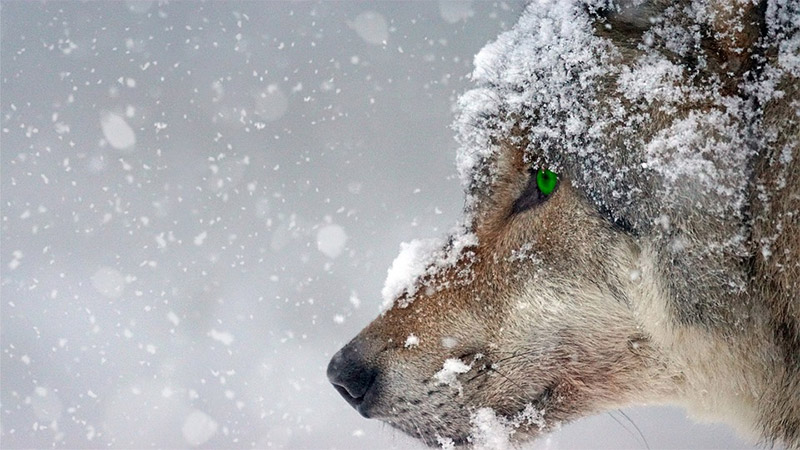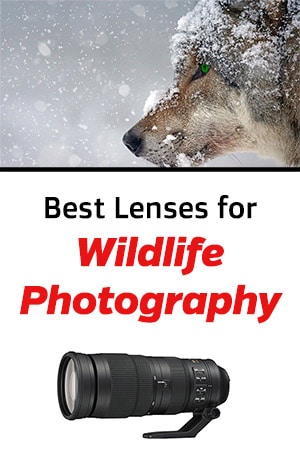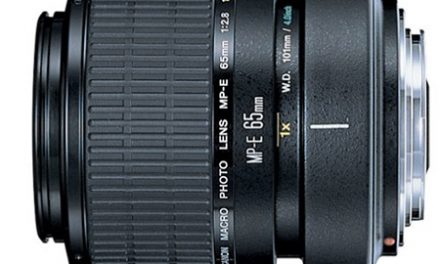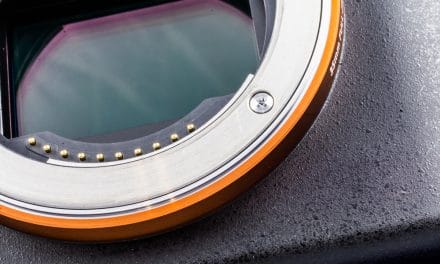
photo by: NeuPaddy from pixabay.com / CC0
Wildlife photography lenses come in a dizzying array of options, just like any other lens choice. The major factors I want to consider while shopping are whether the lens provides enough reach (focal length) for my shy and often distant subject. Weatherization to keep light rain and dust out of my lens is always handy in the outdoors. And image stabilization is nearly mandatory. So let’s look at some of the best (and best-for-the-money) wildlife lenses available today.
Best Wildlife Lenses
Canon EF 300mm f/2.8L IS USM II
This is the lens for long distance narrow depth of field work. f/2.8 is excellent for natural light shoots even in low light environments and the shallow depth of field will give incredible portraits even from a distance. The constant 300mm focal length of this lens may be a drawback for some if you’re not accustomed to working with prime lenses. The glass is coated with several optical quality-enhancing layers, including fluorite to minimize ghosting and flaring. Fluorine is also layered to prevent dirt and finger smudges from sticking to the glass.
The lens is image stabilized, including a third mode that activates the moment the shutter is fully depressed. Taken as a whole the lens provides up to 4 stops of IS. So what does this mean? Say I’m shooting with a shutter speed of 1/8000ths of a second. With the f/2.8 IS USM II, I can shoot at up to 1/500ths of a second and have the same chances of motion blur affecting my image. Considering what we’re paying for glass of this quality image stabilization is mandatory for preventing something as simple as motion blur from diminishing the sharpness of this lens.
AF-S NIKKOR 200-500mm f/5.6E ED VR
One of the nice things about this lens is the constant f/5.6 aperture across the focal range. This helps keep exposure constant while zooming and easy to work with. 500mm of reach is very handy even when shooting skittish, distant targets like birds and small mammals. At 5.1 lbs (2.3 kg) it’s heavy if you’re not accustomed to working with wildlife lenses but moderate weight as far as they go.
The NIKKOR 200-500mm also has VR (vibration reduction) built in. This is the same as Canon’s IS (image stabilized), Sony’s OSS (optical steady shot), and a dozen other variations. The lens uses stabilizing hardware elements to help ensure your shots don’t lose sharpness due to motion blur while shooting handheld. This is especially important for wildlife photographers at the long focal lengths they tend to use. These longer ranges will magnify the motions made while shooting handheld compared to shorter focal lengths and make motion blur far more obvious. Image stabilized lenses are essential for wildlife lenses.
Sony FE 100-400mm f/4.5-f.6 GM OSS
At 3.08 lbs. this telephoto zoom lens is quite light, as expected of a mirrorless camera lens. The FE 100-400mm includes OSS (optical steady shot) for all-important image stabilization. And the zoom torque adjustment ring is a nice feature if you want to really customize how your lens operates. Using the ring I can adjust how fast the lens zooms to suit my workflow needs. The Focus Hold button allows me to lock the focus to a precise focal length if I wish. The button is also programmable and allows control of the Eye Autofocus, Aperture Preview, and Shot Result Preview features.
Sony’s G Master class lenses are the best ones in the lineup and therefore the highest priced. If I had to choose a single downside to Sony glass it would have to be the price. Sony’s camera bodies tend to be very low priced for the features they provide so money has to be recouped elsewhere. While optically sound and well built the lenses are just incredibly expensive for the stats you’re getting. Third party manufacturers really haven’t fully jumped on board with mirrorless the way they have with DSLR manufacturers. Sigma makes Sony lenses but they’re all prime lenses, for instance.
Best Bargain Wildlife Lenses
At first, I wanted to write “affordable.” But affordable is somewhat subjective. Sometimes we just don’t have $1500+ dollars to put towards a premium lens, even if that’s fairly “affordable” by lens standards. Fortunately, there are plenty of great lenses to be found that won’t break the piggy bank.
Sigma 150-600m f/5-6.3 Contemporary DG OS HSM
Sigma makes this fine lens for both Canon and Nikon mounts. As a “contemporary lens,” it’s meant to cover a wide variety of subject types. 150-600mm is great for street photography, capturing portraits at reach (event photography), and of course, it’s a great wildlife focal range.
The aperture is a little narrow and it will struggle in low light settings as a result. The lens uses OS (optical stabilizer) elements to help negate motion blur and a Hyper Sonic Motor for fast and quiet autofocusing. And if you want to keep a focal length in place without lens creep affecting the shoot the zoom lock button is quite handy. Like the Sony lens, the Sigma’s Zoom Lock button is also programmable for additional functionality.
Canon EF 70-200mm f/4L USM
This lens is an absolute bargain for an L-series lens. Canon’s L-series is its professional lens lineup and uses the finest quality Super Low Dispersion glass for fantastic sharpness across the frame. For the price you’re getting an incredible bargain; this is the cheapest L-series lens Canon has to offer. You should consider looking at a Canon Extender to get more focal length out of this lens as well at the cost of stopping down the aperture by one stop. Using the EF 1.4x II extender you’ll have a 98-280mm f/5.6 lens.
But it’s missing out on several important features for wildlife photographers. The slower aperture means its low light performance isn’t as good as it could be. This lens also does not have image stabilization or weatherization. The IS is especially hard to lose so I really wouldn’t recommend this lens unless you’re working with a tripod or monopod as well. If you really need these features, the Canon EF 100-400mm f/4.5-5.6L IS USM II is your best bet at $1999.00. One feature the f/4 has over the f/4.5 USM II is that it uses a ring-type USM autofocus motor. Ring type motors allow for manual focusing without disabling autofocus which is incredibly handy for making instant corrections as needed.
Conclusion
This list can really go on forever, depending on your needs and budget. If I shoot a lot of birds and wildlife from afar I’ll need more focal length than someone who only occasionally does wildlife photography. Weatherization is also dependent on my shooting conditions as well as my camera body — it doesn’t help much if the body isn’t weatherized as well. But the lenses here are a selection that should give you some options to consider if you decide to venture into the world of wildlife photography.

















I would have thought the Tamron 150-600mm G2 lens was a better one to list than the Sigma 150-600 contempory as its got better weather sealing, a more effective OS system, better build quality and like the sigma can be programmed using a usb dock. I have had both and rate the Tamron above the Sigma on every count. Price wise they are very similar.
Do you think 100-400 mm would be enough reach for wildlife?
actually you forgot to mention the Tamron 150-600mm is a great bargain, as they reduced the price when introducing hte G2 model of this lens. I since purchased it after my last comment and reading this article again. Its a great lens for birds and wildlife, really gets you in there, and with a pro version APC sensor you have 900mm reach. I do recommend a monopod, as these lenses get heavy after shooting a while.